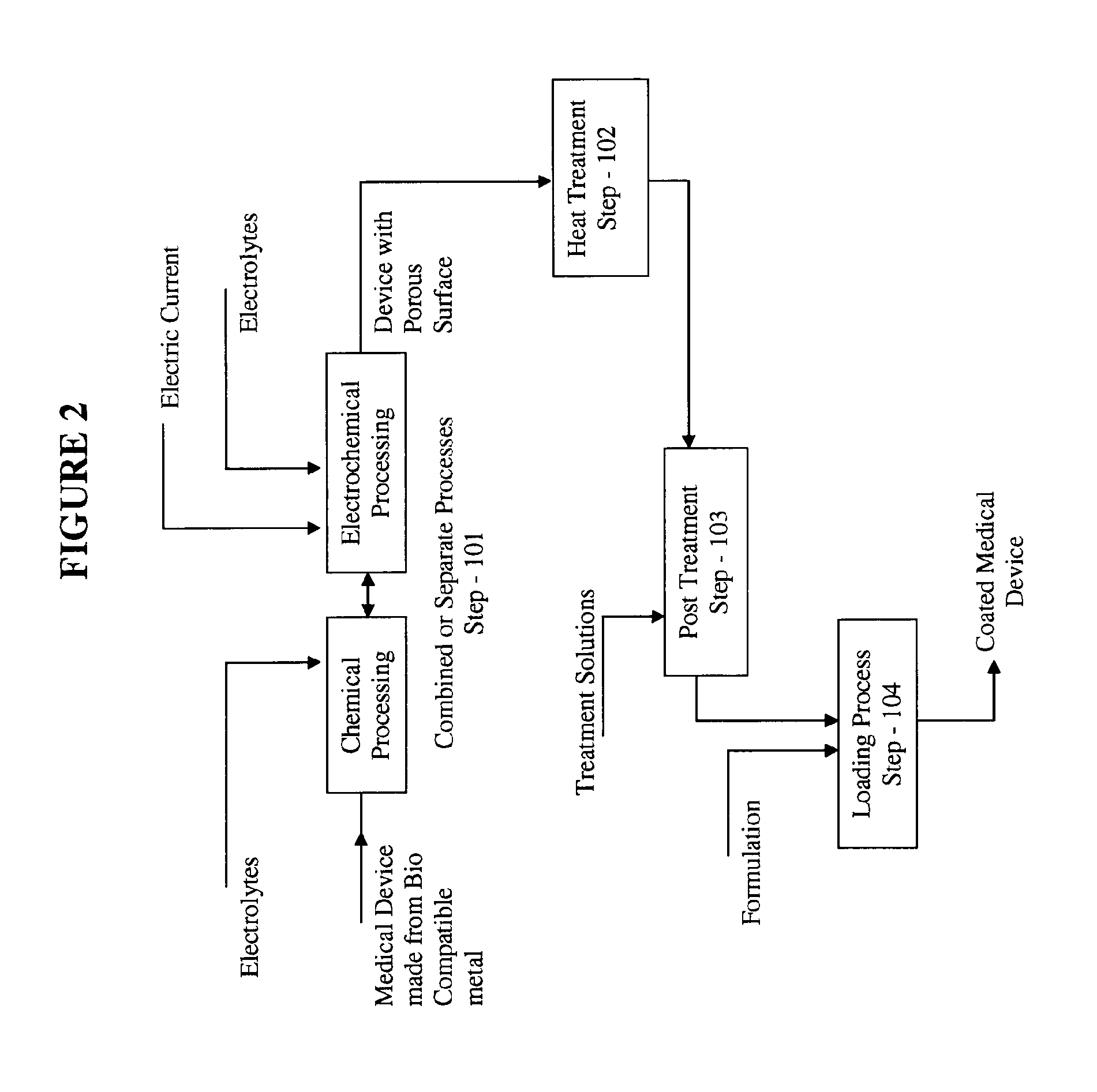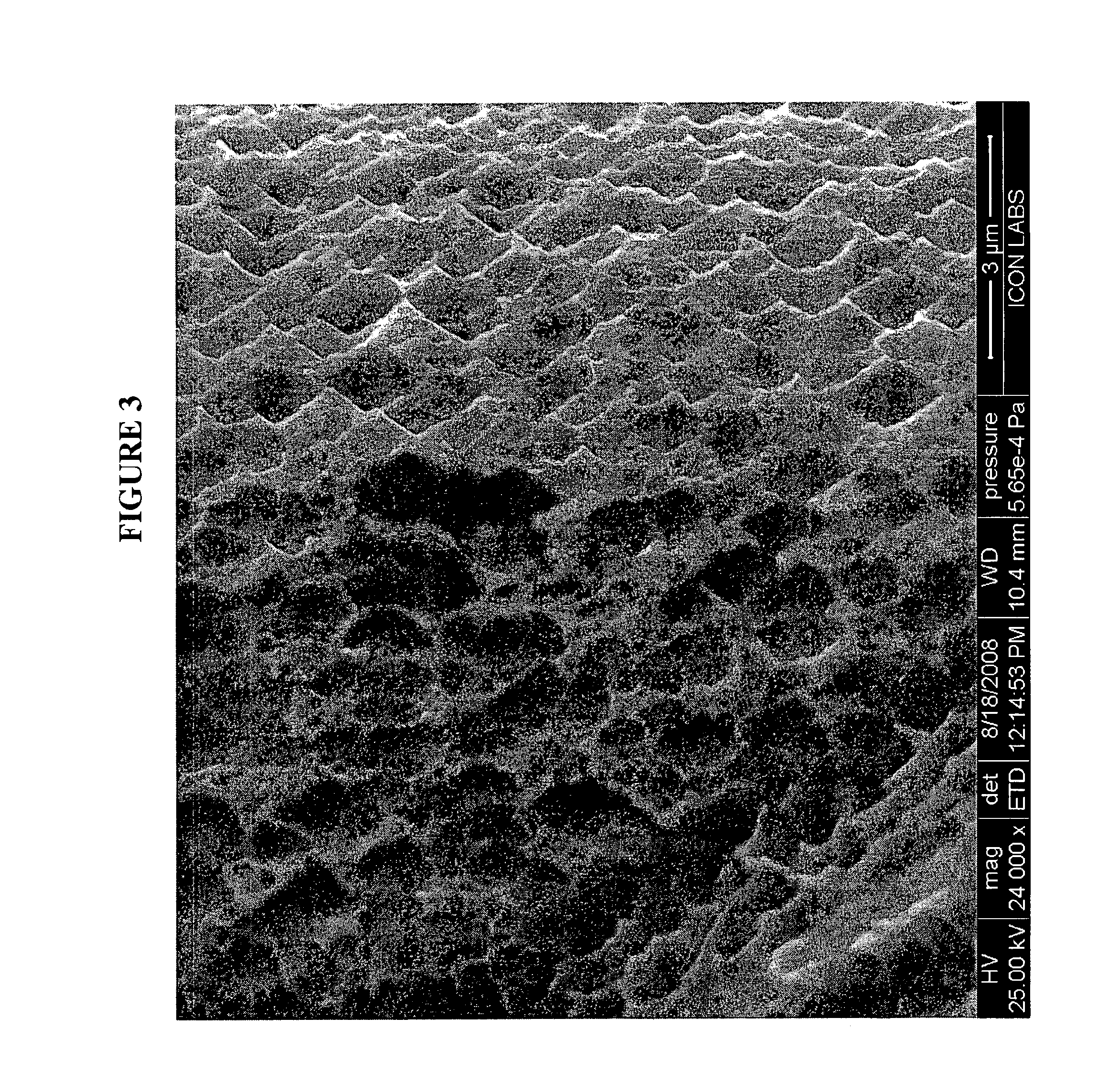Medical device loaded with formulation for targeted delivery of biologically active material/s and method of manufacture thereof
a technology of biological active materials and medical devices, applied in the field of implantable medical devices, can solve the problems of blood vessel walls disturbed or injured, body tissue to exhibit adverse physiological reactions, and formation of emboli or clots in blood vessels, and achieves the effect of inhibiting smooth muscle cell proliferation and high or near-complete drug availability
- Summary
- Abstract
- Description
- Claims
- Application Information
AI Technical Summary
Benefits of technology
Problems solved by technology
Method used
Image
Examples
example 1
[0097]The formulation: The preferred formulation includes, but is not limited to, the following components.[0098]1. The therapeutic agent / s.[0099]2. A lipid or a mixture of lipids which are triglycerides of long chain fatty acids like vegetable oils (which may include Soya, Safflower, Castor, Sunflower oils or similar other oils) with varying amounts of free fatty acid and triglycerides.[0100]3. A low molecular weight alkylated aromatic compound or a mixture of such compounds (referred to as “additive / s” hereinafter).[0101]4. A low molecular weight alcohol or a mixture of such alcohols or chlorinated hydrocarbons used as solvents to from homogeneous solution of all the components.
[0102]The lipid / s and the additive / s can be chosen from a host of chemical compounds keeping in mind their (a) biocompatibility (b) physical affinity to the therapeutic agent / s and with each other (c) chemical compatibility to the therapeutic agent / s and with each other to prevent unwanted side reactions (d...
example 2
[0111]This example illustrates the effect of composition of the formulation on release profile of the therapeutic agent. This example describes specific therapeutic agent and specific vehicle for illustration only. This concept can be extended to other therapeutic agents and vehicles described supra.
[0112]Formulations with different ratios of therapeutic agent to vehicle were coated on the medical devices such as coronary stents. In these formulations, the therapeutic agent was Sirolimus and hydrogenated castor oil was the vehicle. These formulations were typically coated on coronary stents using validated coating technique. The release profile was checked in-vitro using proprietary release medium.
[0113]
Formulation No.Proportion of Drug to vehicleA50:50B60:40C70:30
[0114]Results of in-vitro Sirolimus release profile were as under (±10%).
[0115]
% release of Sirolimus from the stent for above formulationsTime HoursABC0.545-4654-5560-611.055-5663-6470-713.068-6973-7478-796.075-7679-8084-...
example 3
[0117]The coating process: To achieve good coating efficiency, high accuracy, overall control over the amount, uniform thickness of coating and uniform distribution of the therapeutic agent over the entire surface of the medical device, the spray-coating process is required to be controlled by an efficient programming of the entire process. Any coating machine that can meet these requirements can be used for coating process. In this example, the formulation coating process is performed using a micromist medicoat spray coating machine obtained from SONO-TEK Corporation, USA. The Spray coating machine is provided with one micro mist nozzle (located in vertical direction) which carries an inert gas like nitrogen (used as carrier) and two side nozzles (located in horizontal direction). The former is for spraying formulation and the latter are for wetting with the solvent / s to remove the excess therapeutic agent / s and lipid from the medical device to ensure uniformity in coating. The pro...
PUM
| Property | Measurement | Unit |
|---|---|---|
| size | aaaaa | aaaaa |
| size | aaaaa | aaaaa |
| thickness | aaaaa | aaaaa |
Abstract
Description
Claims
Application Information
 Login to View More
Login to View More - R&D
- Intellectual Property
- Life Sciences
- Materials
- Tech Scout
- Unparalleled Data Quality
- Higher Quality Content
- 60% Fewer Hallucinations
Browse by: Latest US Patents, China's latest patents, Technical Efficacy Thesaurus, Application Domain, Technology Topic, Popular Technical Reports.
© 2025 PatSnap. All rights reserved.Legal|Privacy policy|Modern Slavery Act Transparency Statement|Sitemap|About US| Contact US: help@patsnap.com



